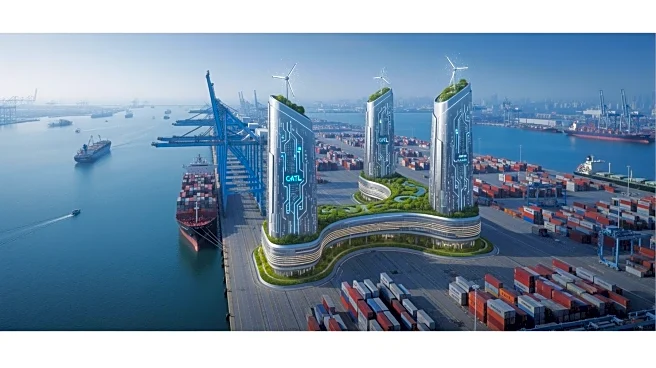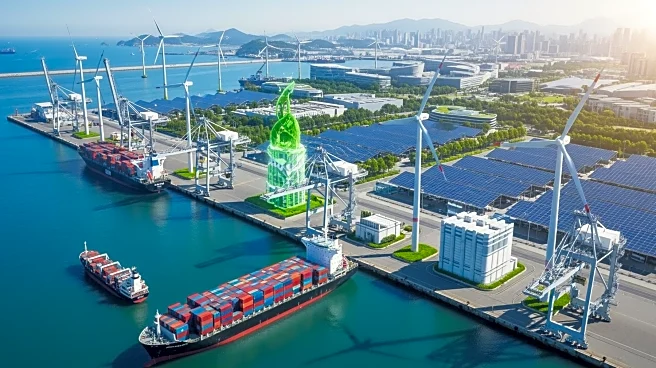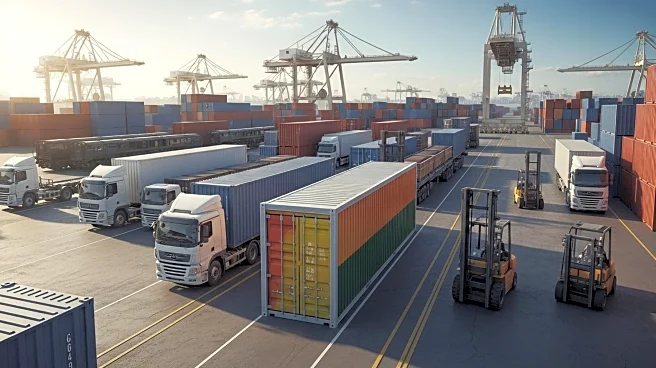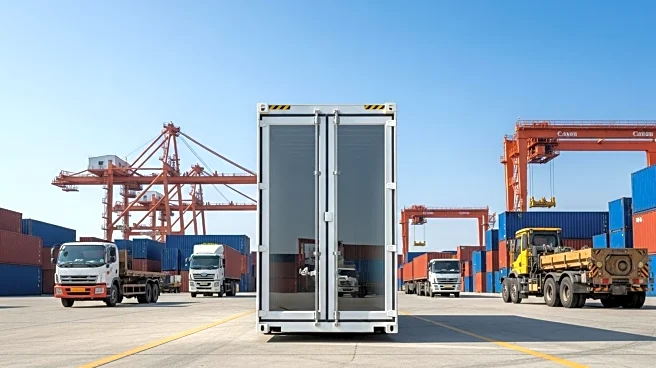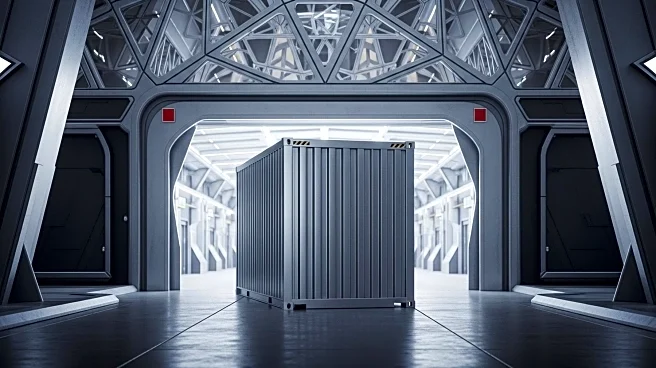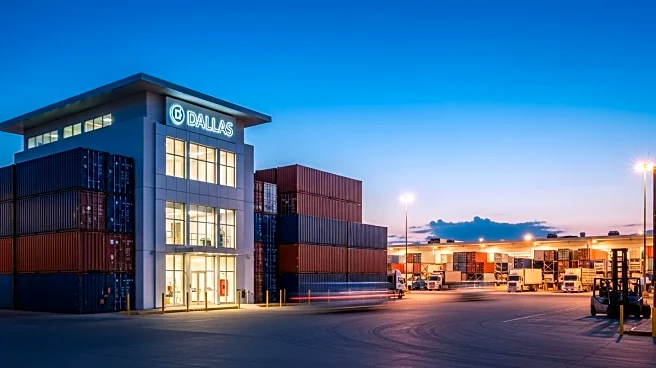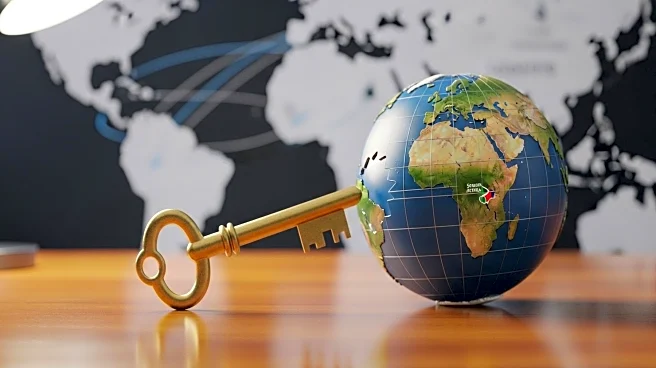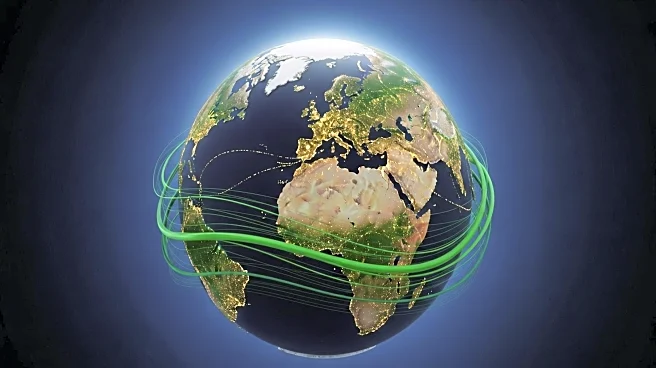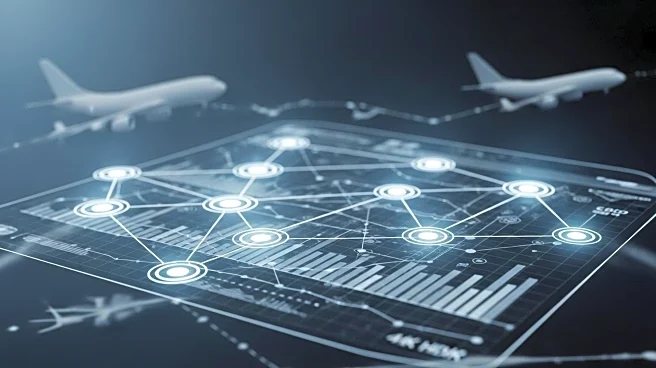What's Happening?
Maersk, a leading container shipping line, and CATL, the world's largest battery maker, have announced a strategic partnership aimed at decarbonizing logistics, port operations, and supply chains. This
collaboration seeks to transform ports into energy nodes by deploying advanced battery systems that absorb electricity during low demand and release it during peak activity. The partnership follows a previous agreement between CATL and Maersk's terminal subsidiary, APM Terminals, to electrify port equipment. The initiative is part of Maersk's broader campaign to reduce carbon emissions in shipping, leveraging CATL's extensive portfolio of lithium-based products to create standardized battery systems across global trade networks.
Why It's Important?
The partnership between Maersk and CATL is significant as it addresses one of the last major sectors to cut emissions at scale—shipping. By integrating battery systems into port operations, the collaboration aims to reduce reliance on bunker fuel, which has been a staple in global trade for decades. This move not only supports local air-quality standards but also aligns with long-term climate targets. The initiative could lead to ports becoming self-sustaining energy hubs, reducing the need for constant new imports and lowering the total cost of ownership through circularity in battery use. The success of this model could pave the way for similar electrification efforts in logistics hubs and warehouses, further advancing the renewable energy transition.
What's Next?
The early deployments of this partnership are expected to focus on ports with easy access to renewable electricity, particularly in Northern Europe. As the model solidifies, it could expand to Asia and North America, potentially extending inland to logistics hubs and warehouses. The collaboration aims to replicate successful templates across various locations, reducing perceived risks and making large-scale electrification more feasible. This strategic move positions Maersk as an energy integrator and CATL as a global showcase for its products, potentially transforming ports from logistics endpoints to central clean energy systems.
Beyond the Headlines
The partnership highlights the importance of systems thinking in maritime decarbonization, treating ports as single energy ecosystems rather than collections of separate machines. It also emphasizes the role of battery technology as core maritime infrastructure, connecting renewable generation, shore power, and propulsion. The collaboration could redefine Maersk's identity from a shipper to an energy integrator, while CATL gains exposure across diverse environments. This shift could significantly alter the landscape of maritime decarbonization over the next decade.
